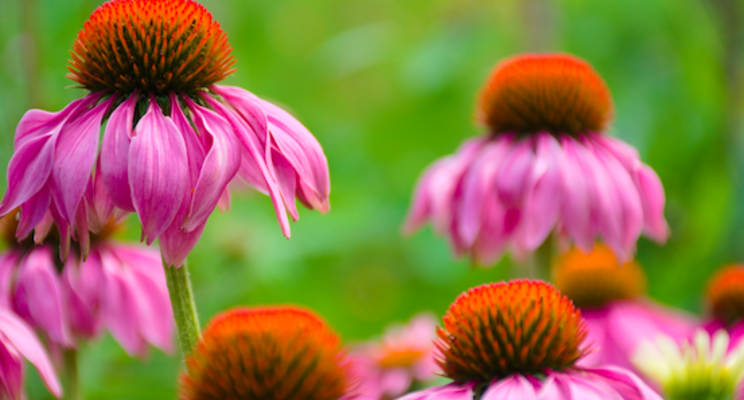How echinaceas became an American horti success story
Added on 21 October 2021

In the early years of Echinacea breeding, Terra Nova discovered that gorgeous colors were pretty easy to make, but the plants were somewhat lacking in good, upright habits. This meant homeowners would have to put in a little extra effort to make them stand up in the garden. By increasing genetic combinations, introducing new species selections, and correcting flaws, Terra Nova has brought along new, exciting, and garden-worthy varieties that will not disappoint even the most sophisticated gardeners.
Overcoming Early Obstacles
Overall, today's Echinacea market is on the climb, but the journey has been a rollercoaster since the first crosses in the 1990s that came from Jim Ault, Ph.D., of the Chicago Botanic Garden. Somewhat like a bad romance, gardeners swooned over the first hybrids, but then became disenchanted and even disappointed that the promise of this garden miracle never came true. Gardeners divorced themselves from Echinacea, only to be lured the following season with another seductive selection. It wasn't until breeders took a critical look at their own work that the relationship improved between this genus and gardeners.
Breeders started selecting for a higher number of crowns emerging from the soil, which meant more stems, more foliage, more flowers, and a higher survival rate. As the quality of the plants improved, so did the popularity of Echinacea. Today, the problem isn't the quality of the genetics; it's the supply available to the market. Labor shortages, overcrowded labs that produce tissue culture plants, and shipping routes being disrupted are the enemies of Echinacea now.
Modern Echinaceas are changing the minds of growers and consumers alike. Originally classed as fussy, prima-donna plants, Echinaceas are coming into their own rather quickly thanks to thoughtful breeding and the feedback of trial gardens, growers, and consumers. Embarking on new breeding projects is a bit like rolling genetic dice, and the breeder must build on each roll, select the best, destroy the rest, and move on.
Read more on Greenhouse Grower.
Source: Greenhouse Grower
More news















